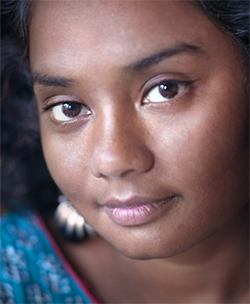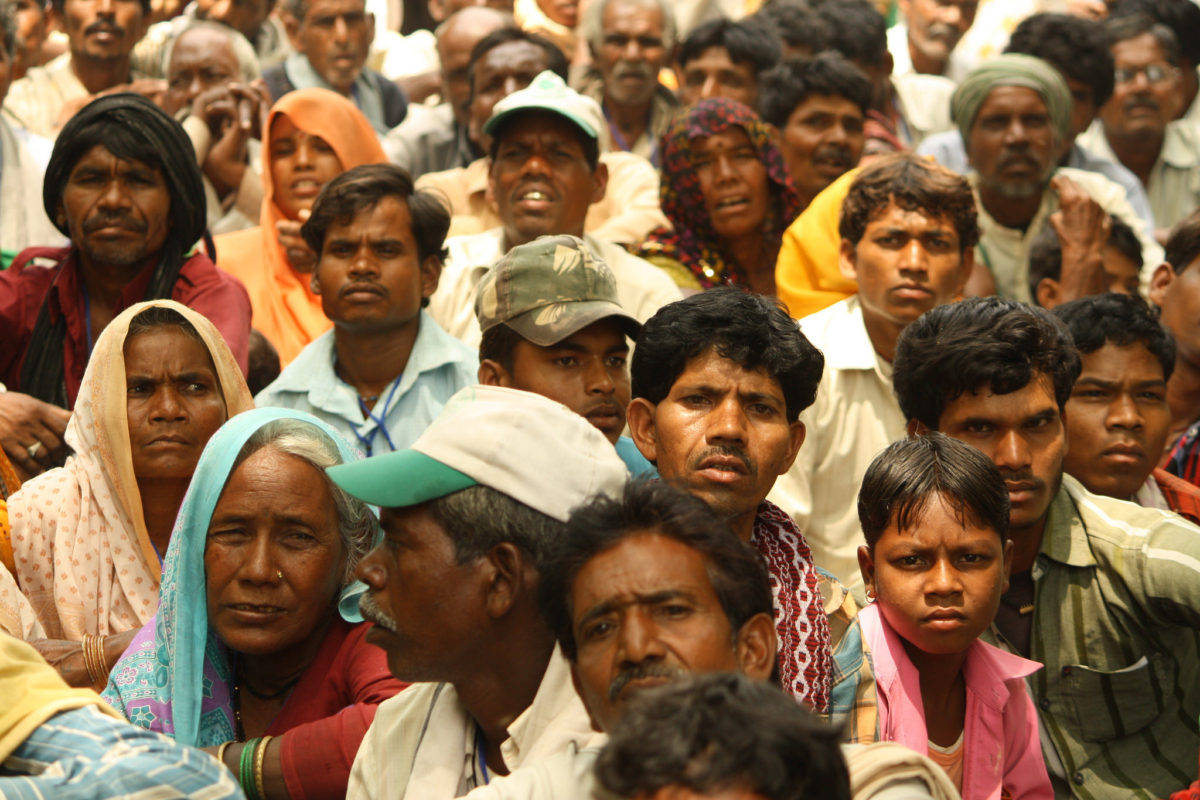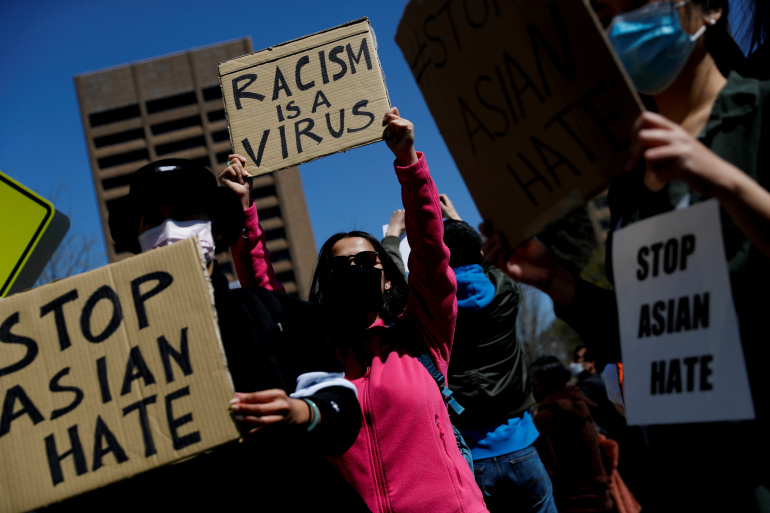By: Thenmozhi Soundararajan
 Last year I was ejected four times from the California Board of Education building. My crime was being Dalit American.
Last year I was ejected four times from the California Board of Education building. My crime was being Dalit American.
I was part of hundreds of caste-oppressed South Asian American families who came out to testify at the Board of Education’s hearings hearings about textbook descriptions of caste discrimination. The protest I attended was organized by the South Asian History For All Coalition. We were fighting a Hindu American foundation that had thrown millions of dollars into this textbook battle, hoping to erase discussions of caste from California textbooks and replace it with a sanitized version of South Asian American history. The threat of Dalits breaking the silence on caste was so disturbing that upper-caste Hindus called the police on Dalit families, and disrupted and heckled us as we testified.
We had the historical record and our personal stories on our side, and we were fighting to support an evidence-based curriculum recommended by hundreds of academics. Yet, the California Board of Education allowed fundamentalist dollars to override the facts. With that, they allowed alternative history into textbooks in a decision that will impact millions of children across California.
This is experience is at the heart of why I worked with my co-author Maari Zwick Maitreyi to create the first survey on caste in the United States. Our historic report, Caste in the United States, provides some of the first data on caste discrimination in the US. The report confirmed that caste discrimination exists in the United States, that it is a significant problem, and that for South Asian Americans it is as crucial for us to tackle this violence as it is to confront white supremacy.
What we found was startling. 1 in 4 Dalit Americans experience verbal and physical assault, 1 in 3 face discrimination in school, and 2 out of 3 face discrimination in their workplaces. We knew that caste discrimination was bad, but we hadn’t expected this level of discrimination. These data finally confirmed our lived experiences, and reinforced that caste oppression is a problem that the larger South Asian American community must acknowledge.
Many South Asians who were able to migrate to the U.S. have privileges related to language, class, religion, and, most importantly, to caste. Many upper-caste South Asian Americans will try to avoid the discomfort of confronting their caste privilege by saying that the diaspora is “casteless.” As a result many non-South Asian American organizers in our community just don’t know the extent of caste discrimination.
For people outside of the South Asian American community, it can be hard to understand why caste matters. But caste is at the core of South Asian hegemony, and it is crucial for understanding how oppression works in a South Asian context. All progressive Asian American organizers should consider how the battle that South Asian Americans face around the caste system speaks to the violence of racialization. White supremacy forces all of us into the same racial category with people who are our oppressors in our countries of origin, and who derive privilege from hegemonies of language, nation, and caste.
As we work to fight for justice for all of our peoples we have to fight as much with these internal hegemonies as we do with whiteness. South Asian American approaches to dismantling caste oppression may be painful, but also liberating.
* * *
Caste is a structure of oppression that affects over 1 billion people across the world. It is a system of religiously-codified exclusion established in Hindu scripture: At birth, every child is said to inherit their ancestor’s caste, which determines their social status and assigns their “spiritual purity”. Furthermore, Hindu origin myths state that different people were created from different parts of God Brahma’s body, and that each caste of people were to be ranked hierarchically according to ritual status, purity, and occupation. Outside of the four main caste groups established by Hindu scripture, Those considered lower than the lowest of the castes. These are known as the Dalit, meaning “broken but resilient” and formerly known as “untouchables”; and, the Adivasis, or the indigenous peoples of South Asia.
Together these caste-oppressed groups continue to experience profound injustices, including socioeconomic inequalities, usurpation of land, loss of civil rights, and brutal violence at the hands of those designated as members of “upper” castes. Dalits under caste apartheid are forced into segregated schools, villages, places of worship, and subject to violent oppression. Often they are denied access to public amenities, including water and roads. This entire system is enforced by violence and maintained an ancient culture of impunity that has, despite its contemporary illegality of the system, persisted and thrived for 2,500 years.
What our report confirms for the US is that caste is not limited to the Subcontinent; instead, caste has been found wherever South Asian migrants go. In the United States, many caste-oppressed migrant communities seek to escape caste discrimination. Yet, they nonetheless find it replicated in South Asian American communities, religious institutions, and businesses. This has led to many shocking reports of caste discrimination in the United States, including incidents of physical assault, verbal slurs, and discrimination in schools, businesses, and workplaces. These findings confirm the pain of many Dalit Americans and other caste-oppressed migrants; and, it is call to action for our entire community.
For progressive Asian Americans, this report opens up a door to a reimagining of what it means to be South Asian. Until now, South Asian American identity has been portrayed primarily through the lens of Indian upper-caste Hindu identity.
This has to end now.
We have to de-center upper-caste Hindu Indian narratives of South Asian American identity and instead center caste-oppressed migrants whose experiences of caste and religious oppression at the hands of upper-caste Hindus is a key equity fight in our communities. These caste-oppressed immigrant communities include Dalits, Sikhs, Ravidassias, and South Asian Christian, Muslims, and Buddhists.
When caste is not addressed in our communities, dominant-caste Hindu Americans dominate the narrative, and further continue to bring a caste-ist mindset to issues of racial equity in the United States. Caste is perpetuated primarily by those who privilege from it, and the caste-ist mindset fits neatly within a racist mindset. It is the foundation of why upper-caste Indian Americans might also feed into the Model Minority Myth; both caste and the Myth validate their own ideas of merit and success while hiding the centuries of exploitation of caste-oppressed people that has allowed them to succeed. Recently, a group of upper-caste Hindu Americans tried to disrupt DACA advocacy with their own requests to pay for Trump walls in exchange for expedited green card processing. The slogans and signs they used included “skilled immigrants” or “here by merit”. These phrases are dogwhistles for caste, and this effort is clear evidence that we must deal with caste oppression in our communities.
Caste oppression is also relevant to conversations of South Asian anti-blackness. In fact, the caste apartheid system is called the Varna system in Sanskrit, where “varna” means “colour”. Furthermore, South Asian American anti-blackness draws upon the caste system’s existing logic of anti-Dalitness.
We hope our report will inspire South Asian and Asian American groups to question how they work with our community, and to include caste equity as part of their platform for change. We have some specific recommendations that can help with this.
Schools
Schools and universities are often places where South Asian American students navigate complex identities during formative periods of their lives. Within a principally Eurocentric school curriculum, many teachers are not aware of the nuances and history of South Asian caste systems. We recommend that educators teach about caste oppression alongside other issues of race, particularly when classes are focused on South Asian history and global politics. We also recommend that institutional disciplinary committees and international student services sensitize themselves to the issue of caste, and that anti-discrimination policies specifically mention caste. Caste-oppressed students must not be made to feel that their history and lived experiences with caste are erased or misrepresented.
Workplaces
All government, corporate, and non-profit organizations that deal with the South Asian community should know about caste and prioritize the visibility of caste-oppressed communities.
South Asian Progressive Organizations:
We must end the homogenizing ways in which we talk about South Asian identity. Instead, we must acknowledge the internal hegemonies that oppress some South Asians and South Asian Americans, including hegemonies of caste, religion, geography, and faith.
The most important recommendation we can make for South Asian organizations is to ensure that organization vision and/or mission statements mention caste explicitly. Every progressive South Asian American community should be committed to the fight against both white supremacy and caste apartheid. South Asian American immigrant networks must work to support religious and geographic diversity and to center the voices of caste-oppressed communities.
The process must begin with the recognition and decentering of Indian Hindu “upper” caste experiences as the norm, ensuring that policy
advocacy, organizing, and outreach events are inclusive. Immigrant networks must also expressly mention communities often marginalized through caste and religion.
South Asian immigrant networks must stop replicating caste privilege through food, religious, relationship, and social locators, especially in the context of ongoing violence in South Asia against Dalits, Adivasis and religious minorities.
Religious Institutions
Despite origins in Hinduism and Hindu scripture, caste is not just a Hindu problem. All of our South Asian religious organizations in the United States must commit to the eradication of caste-based division amongst our leadership and our memberships. Our missions, boards, ceremonial, charitable, and values processes must explicitly maintain that caste-based discrimination will not be tolerated. Religious institutions must commit to ensuring that a place of worship is wholly welcoming to all seeking God.
* * *
At Equality Labs, we believe in the radical power of our stories to end caste apartheid. We ask the broader Asian American movement to stand with us as we undergo this painful moment of political clarity. We expect that difficult conversations will be invoked by our report, and that these will push our South Asian American identity to be more powerful and inclusive.
After all, if we win, we win not just for us but for all of us.

Thenmozhi Soundararajan is a Transmedia Artist, Activist, and Technologist who is the founder and executive director of Equality Labs. She is the co-founder of Dalit History Month and developed the award winning digital security curriculum digital security for all. Find her on Twitter at @dalitdiva or @equalitylabs.
Write Back, Fight Back(#WriteBackFightBack) is a weekly essay series sponsored by 18MillionRising, Asian Americans Advancing Justice, and Reappropriate. It features emerging Asian American writers on topics of racial and social justice. New essays will appear every Thursday.


